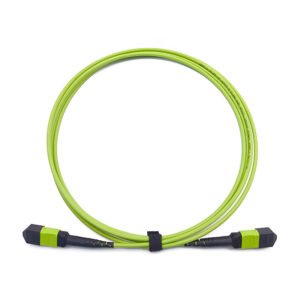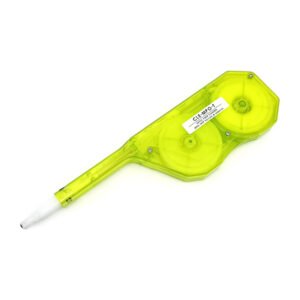MPO/MTP Breakout Cables
MPO/MTP breakout cables are a type of fiber optic cable that is used to connect MPO/MTP trunks to individual LC/SC/ST/FC/E2000 connectors. They are typically used in data centers and high-performance computing (HPC) applications to provide a high-density, scalable, and cost-effective solution for connecting multiple fiber optic strands.
Description
MPO/MTP Breakout Cables: High-Density Fiber Patching for Data Centers
Features
- High density: MPO/MTP connectors can pack up to 12 fibers into a single ferrule, providing a high-density solution for data centers.
- Low loss: MPO/MTP connectors are designed for low insertion loss and back reflection, ensuring optimal signal transmission.
- Durability: MPO/MTP connectors are made of high-quality materials and are designed for long-term durability.
- Versatility: MPO/MTP Breakout Cables are available in a variety of lengths and fiber types to meet your specific needs.
Applications
- Data centers: MPO/MTP Breakout Cables are widely used in data centers for high-density fiber patching.
- Telecommunications: MPO/MTP Breakout Cables are also used in telecommunications applications for backbone cabling and inter-building connections.
- Enterprise networks: MPO/MTP Breakout Cables are increasingly being used in enterprise networks for high-bandwidth applications.
Common Parameters
| Parameter | Description |
| Fiber type |
Multimode or singlemode
|
| Fiber core size |
50/125 µm, 62.5/125 µm, or 85/125 µm
|
| Connector type |
LC, SC, ST, FC, or E2000
|
| Cable length | Up to 10 meters |
| Jacket type | LSZH or PVC |
Benefits of Using MPO/MTP Breakout Cables
- Increased density: MPO/MTP Breakout Cables can significantly increase the fiber density in your data center, which can save space and reduce costs.
- Reduced cabling complexity: MPO/MTP Breakout Cables can simplify cabling by reducing the number of cables required.
- Improved performance: MPO/MTP Breakout Cables can provide lower insertion loss and back reflection, which can improve signal transmission and network performance.
- Future-proof: MPO/MTP Breakout Cables are a future-proof solution that can support 40G and 100G applications.
How to Choose the Right MPO/MTP Breakout Cable
When choosing an MPO/MTP Breakout Cable, there are a few factors to consider:
- Fiber type: The type of fiber you need will depend on your application. OM1 and OM2 fiber are typically used for short-distance applications, while OM3, OM4, and OM5 fiber are used for longer-distance applications. OS1 and OS2 fiber are used for single-mode applications.
- Connector type: The connector type you need will depend on your equipment. MPO connectors are typically used to connect to MPO transceivers, while LC duplex connectors are typically used to connect to LC duplex ports.
- Fiber count: The fiber count you need will depend on your bandwidth requirements. If you need to support 40G or 100G, you will need a cable with at least 8 fibers.
- Length: The length of the cable you need will depend on your installation. Choose a cable that is long enough to reach from your transceiver to your switch or router.
- Jacket type: The jacket type you need will depend on your environment. PVC jackets are typically used for indoor applications, while LSZH jackets are used for outdoor applications.
Conclusion
MPO/MTP Breakout Cables are a high-density, low-loss, and durable solution for high-bandwidth applications in data centers, telecommunications, and enterprise networks. They can help you save space, reduce costs, and improve network performance.





















